Home
»
Das Unternehmen
»
Die Zinnverarbeitung
Die Zinnverarbeitung
Die Techniken zur Zinnverarbeitung haben sehr alte Wurzeln, zur Herstellung der ersten Gegenstände wurde die Metallplatte erhitzt, um sie dann mit einem Hammer in mehreren Phasen formen zu können. Später wurden dann Gussformen aus Erde, Gips oder Stein benutzt, mit denen das Zinn geschmolzen wurde. Diese Gussformen wurden dann durch Kupfer-, Bronze-, Gusseisen und Eisenformen ersetzt. Nach dem Guss wurde der Zinngegenstand auf der Drehbank vollendet, danach wurden die Zusatzteile aus Schmelzzinn an die Basisform geschweißt. Die Verarbeitung des Hartzinns hat sich mit der Zeit kaum geändert, noch heute sind die Techniken zur Herstellung von Schüsseln, Tellern, Bestecken und Gefäßen aller Art handwerklicher Art und künstlerisch sehr ausdrucksvoll.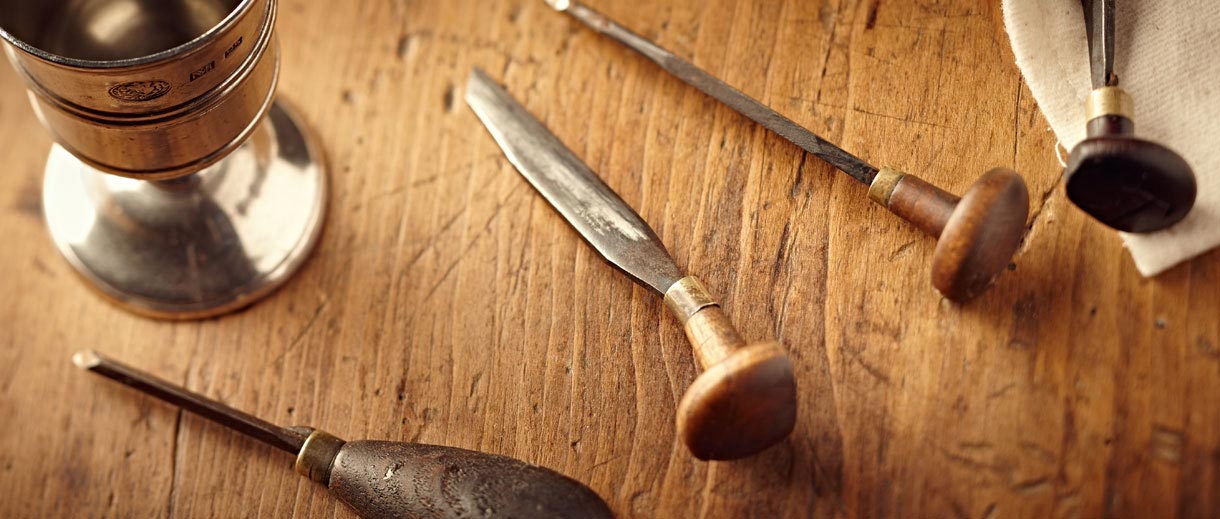
Der Entwurf und die Verwirklichung jedes Modells wird persönlich von den Inhabern und den Mitarbeitern ausgeführt. In der Folge können Sie einige Phasen der Zinnverarbeitung sehen:
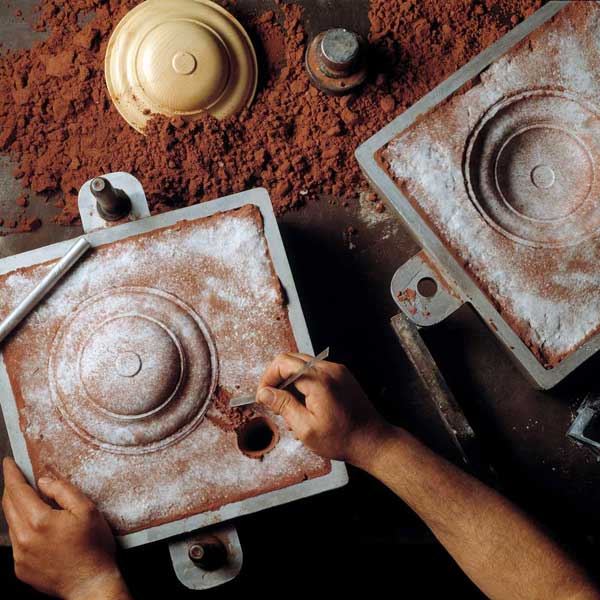 Entstehung des Prototyps: The first prototype can be made of wood, wax, directly in pewter and recently also taking advantage of the rapid prototyping of 3D printers. Got the prototype is necessary to duplicate it to get the pewter model that will serve as a matrix for the creation of the molds. The matrix is usually achieved by using the technique of sand casting as shown in the photograph on the right.
Entstehung des Prototyps: The first prototype can be made of wood, wax, directly in pewter and recently also taking advantage of the rapid prototyping of 3D printers. Got the prototype is necessary to duplicate it to get the pewter model that will serve as a matrix for the creation of the molds. The matrix is usually achieved by using the technique of sand casting as shown in the photograph on the right.
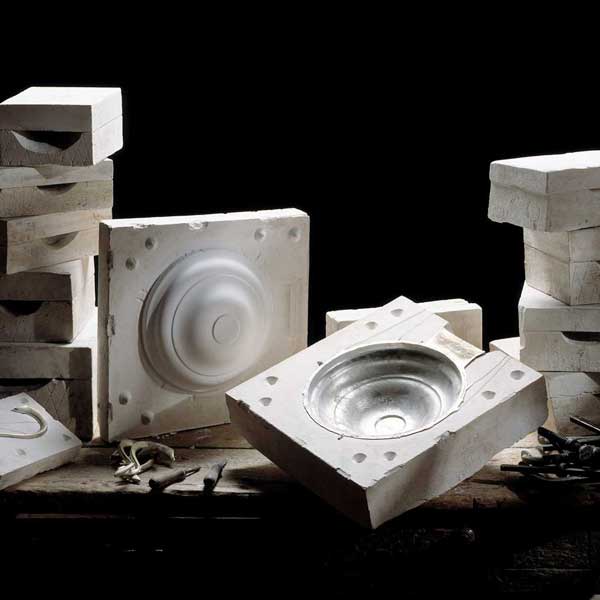 Moulds: Each pewter piece is made up of a number of different moulds; one for the main body, and others for the different components. Some pieces require as many as seven different moulds. Modern moulds are made from silicon rubber, although some of the original iron moulds are still used and sometimes, for small quantities, are also used plaster molds.
Moulds: Each pewter piece is made up of a number of different moulds; one for the main body, and others for the different components. Some pieces require as many as seven different moulds. Modern moulds are made from silicon rubber, although some of the original iron moulds are still used and sometimes, for small quantities, are also used plaster molds.
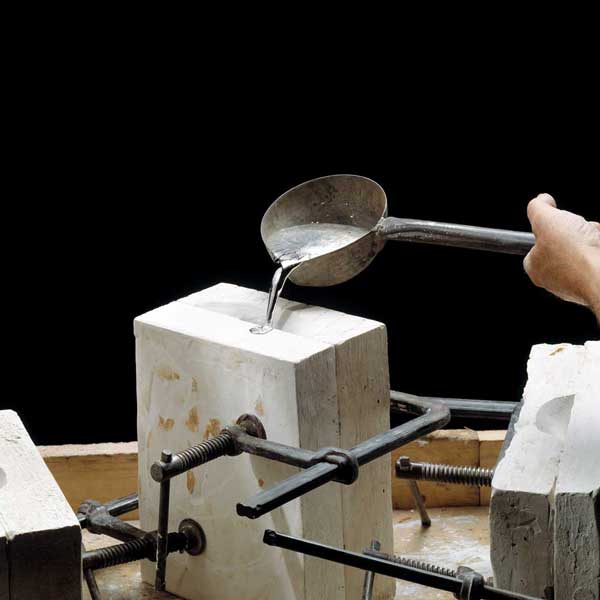 Guss: The raw materials (tin, copper and antimony) are cut up and heated to 350° in a kiln, and very quickly a beautiful molten liquid is formed, which, using a casting ladle, is poured into mould with extreme care.
Once cooled, the pewter is gently extracted and any superflous lumps and bumps leftover from the casting process are removed.
Guss: The raw materials (tin, copper and antimony) are cut up and heated to 350° in a kiln, and very quickly a beautiful molten liquid is formed, which, using a casting ladle, is poured into mould with extreme care.
Once cooled, the pewter is gently extracted and any superflous lumps and bumps leftover from the casting process are removed.
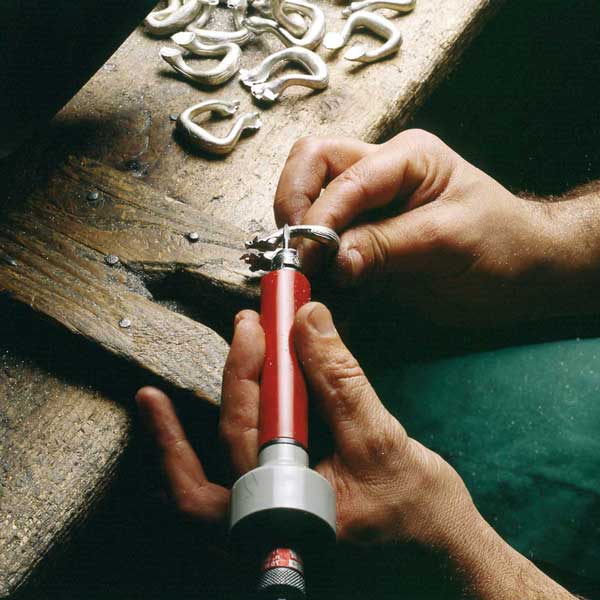 Abgraten: At this point any decorative chiseling an engraving is undertaken, including touchmarks, to enhance the overall character of the object.
Abgraten: At this point any decorative chiseling an engraving is undertaken, including touchmarks, to enhance the overall character of the object.
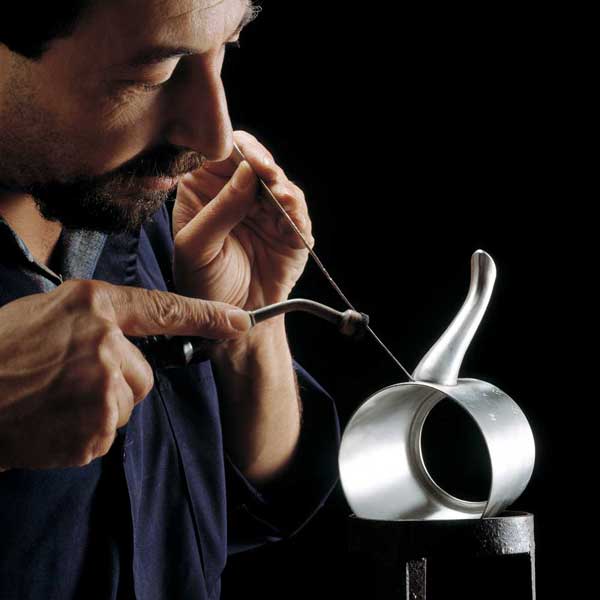 Schweißen: Each piece is then assembled, welded and soldered by hand. This is an extremely skilful and technical procedure, especially with pieces designed to hold liquids.
Schweißen: Each piece is then assembled, welded and soldered by hand. This is an extremely skilful and technical procedure, especially with pieces designed to hold liquids.
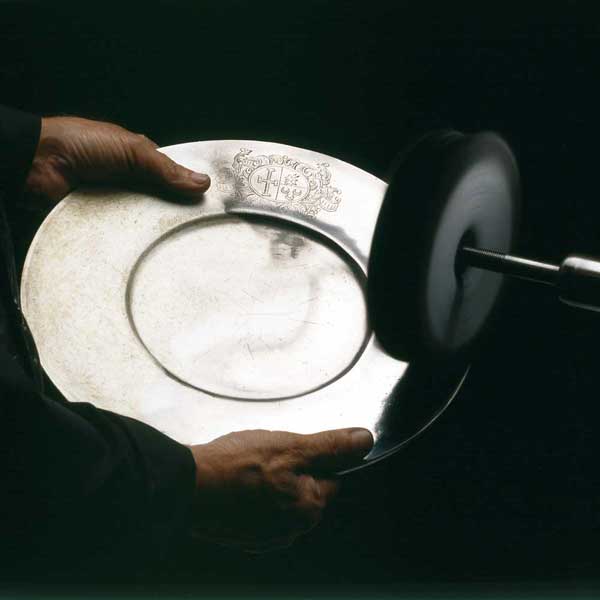 Politur: By skilled polishing and then rubbing using increasingly fine graded wool, 'finishing' rids the surface of any roughness and imperfections, yet retains the character of the piece. The final buff is undertaken using a fine polishing cloth.
Politur: By skilled polishing and then rubbing using increasingly fine graded wool, 'finishing' rids the surface of any roughness and imperfections, yet retains the character of the piece. The final buff is undertaken using a fine polishing cloth.